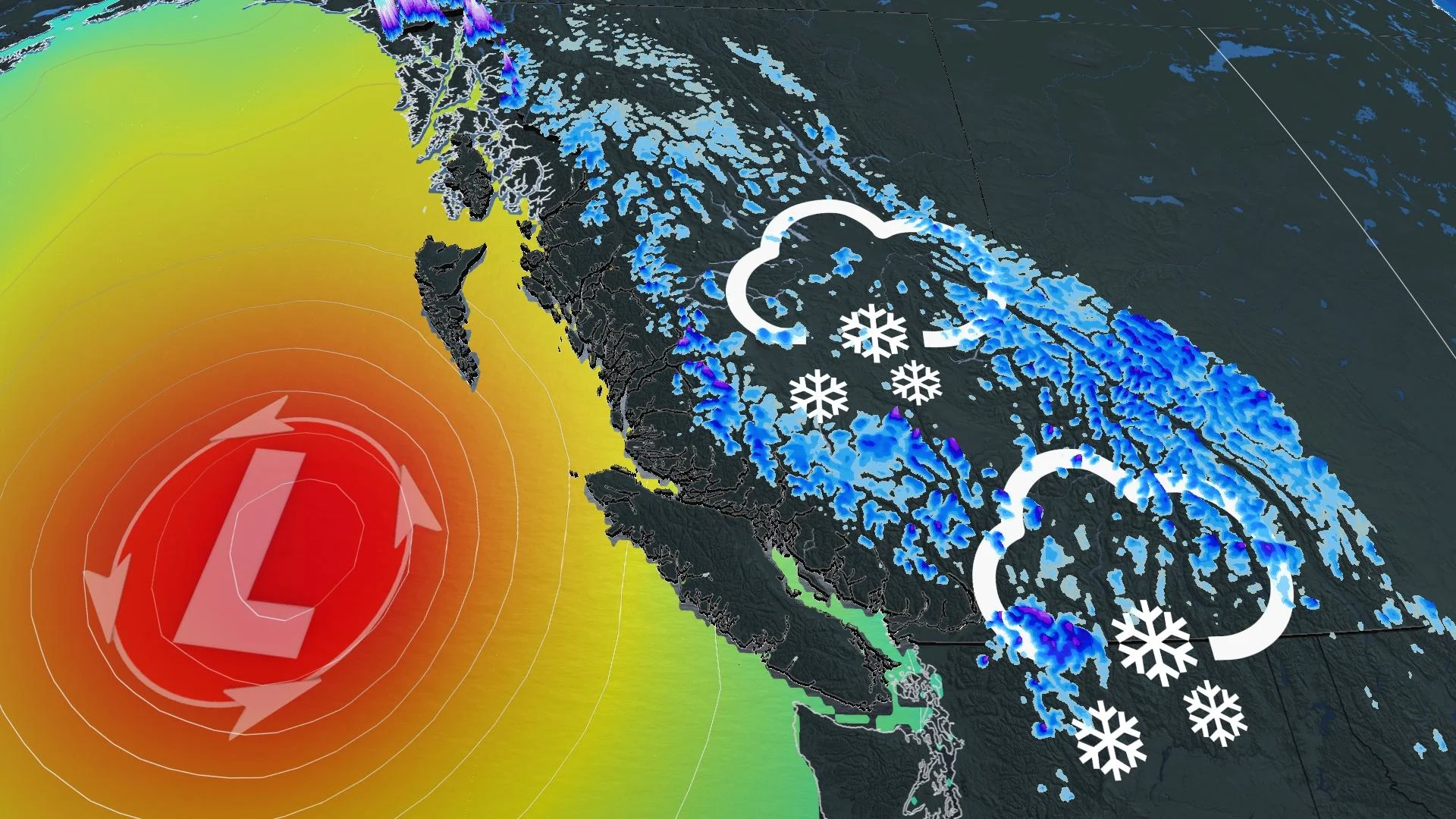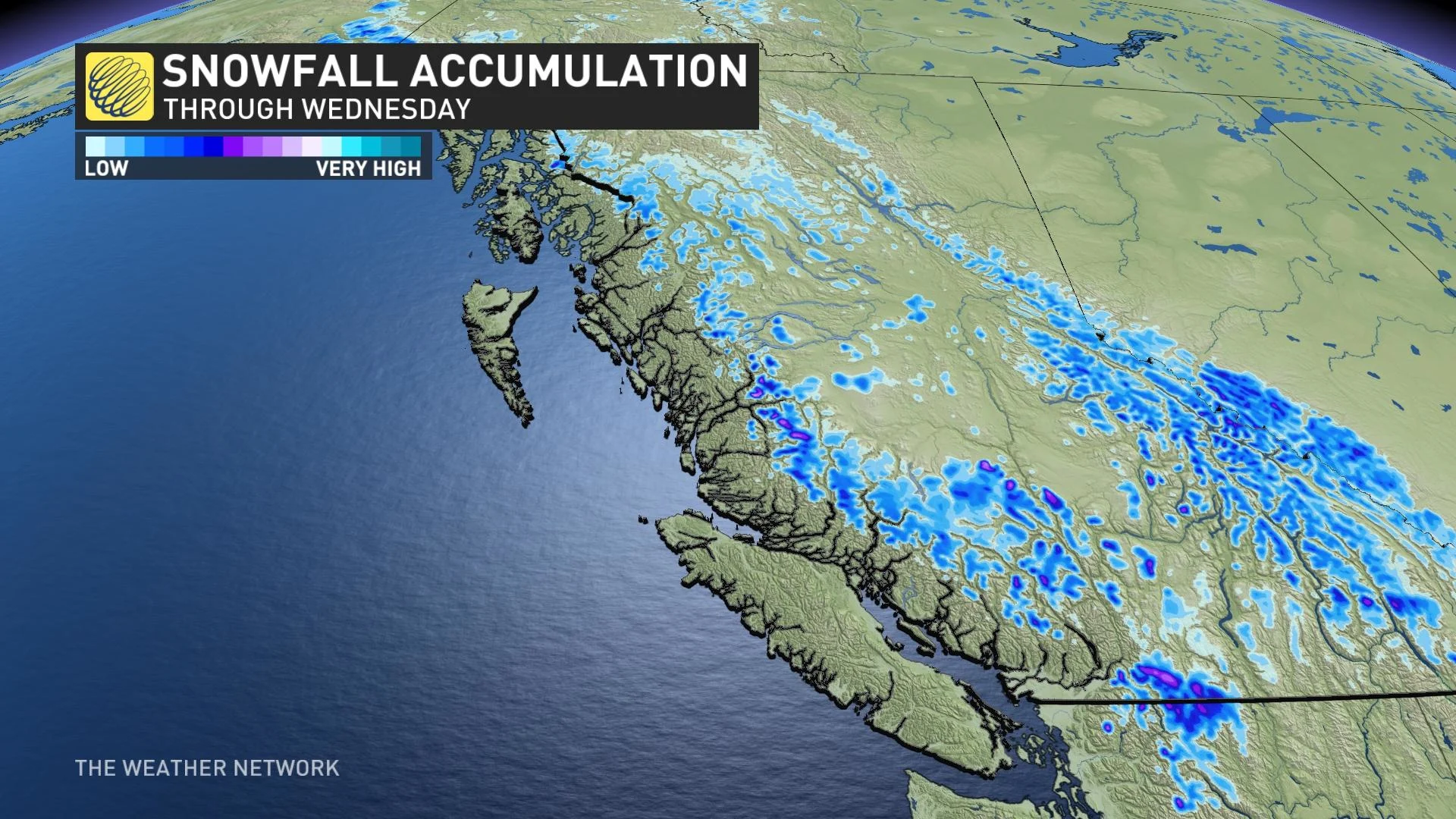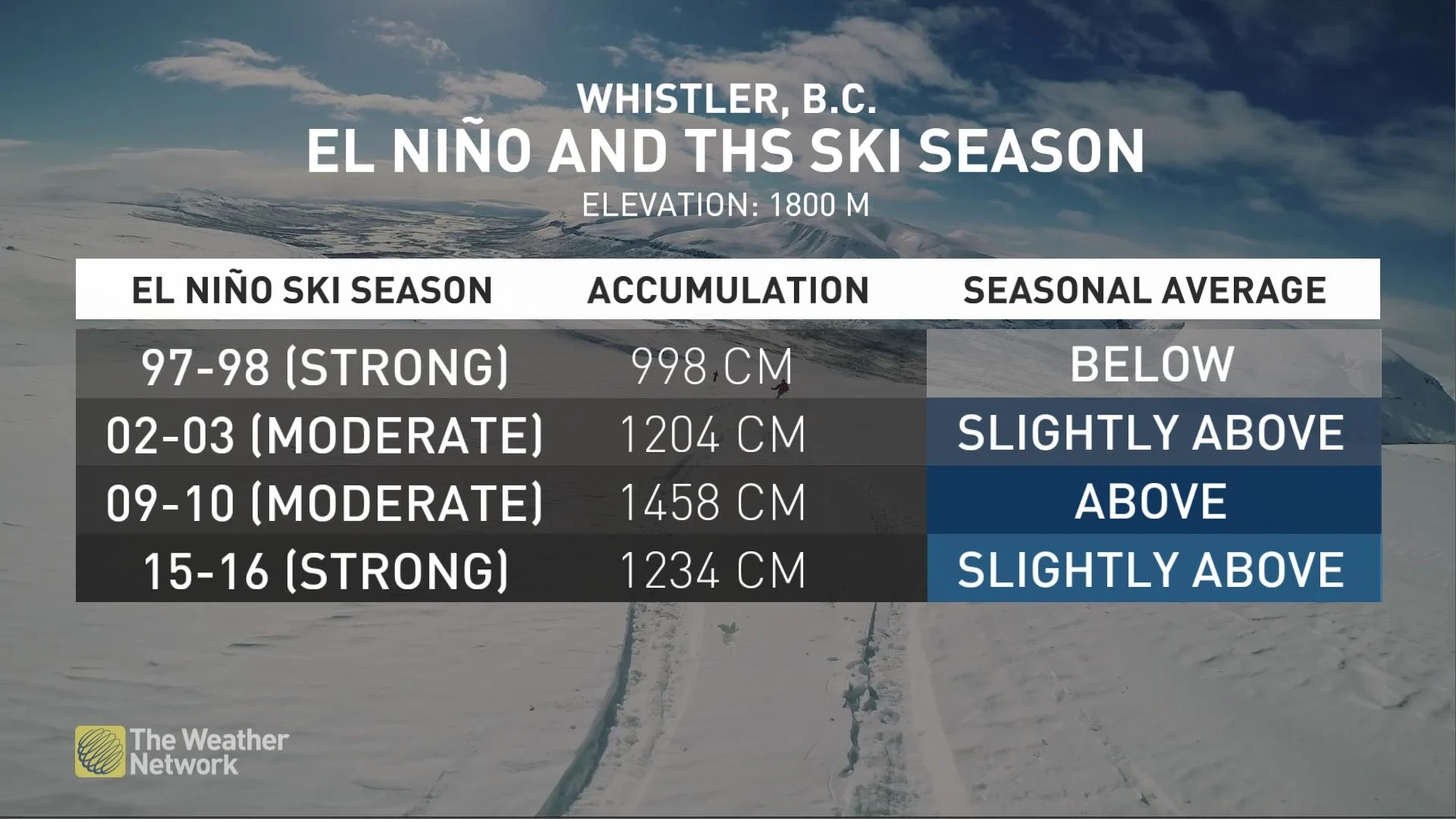
Dusting of snow in B.C. before fall arrives, but isn't sign of pattern change
Snow in B.C. in September? Is this a sign of things to come? Well, the Pacific Ocean has other plans -- at least for now.
Reports across social networks highlighted that snow has returned to the alpine across British Columbia, including the Big White Ski Resort near Kelowna.
Is this a sign of things to come? Well, the Pacific Ocean has other plans -- at least for now.

A ridge pushes in off the Pacific Ocean, shooting freezing levels back over 3000 metres, and that’s above the most skiable terrain in the province.
SEE ALSO: Why El Niño won't slow down the bustling Atlantic hurricane season
Does El Niño spell disaster for the ski season?
A budding El Niño doesn’t necessarily mean the ski season is heading toward an impending disaster.
We’ve looked into a couple of major ski resorts across southern B.C., and it’s not all doom and gloom.
First up, Whistler Blackcomb. Known for nearly 12 metres of fresh powder annually, how have moderate-to-strong El Niño events impacted snowfall amounts over the past 25 years?

Most of the stronger El Niños that have impacted the ski season in Whistler have still led to an above-average snowfall over the past 25 years. Snowfall remained high during December and January of 1998, even though the season as a whole fell below average.
Although the super El Niño of 2015-16 was feared to be a washout, ski resorts like Revelstoke, Big White and Whistler all recorded above-average snowfall.

A spotlight on Big White, near Kelowna, shows some susceptibility to below-average snowfall during El Niño ski seasons, but more than 500 cm of accumulated snowfall is far from a disaster.
Each El Niño event is unique, and as this current El Niño cycle is forecast to continue to intensify, the ski seasons of 1997-98 and 2015-16 appear to be the best available matches.
Next week, there's a signal for strong lows off the coast of British Columbia, but they'll be associated with a milder, southwest flow and high freezing levels.











